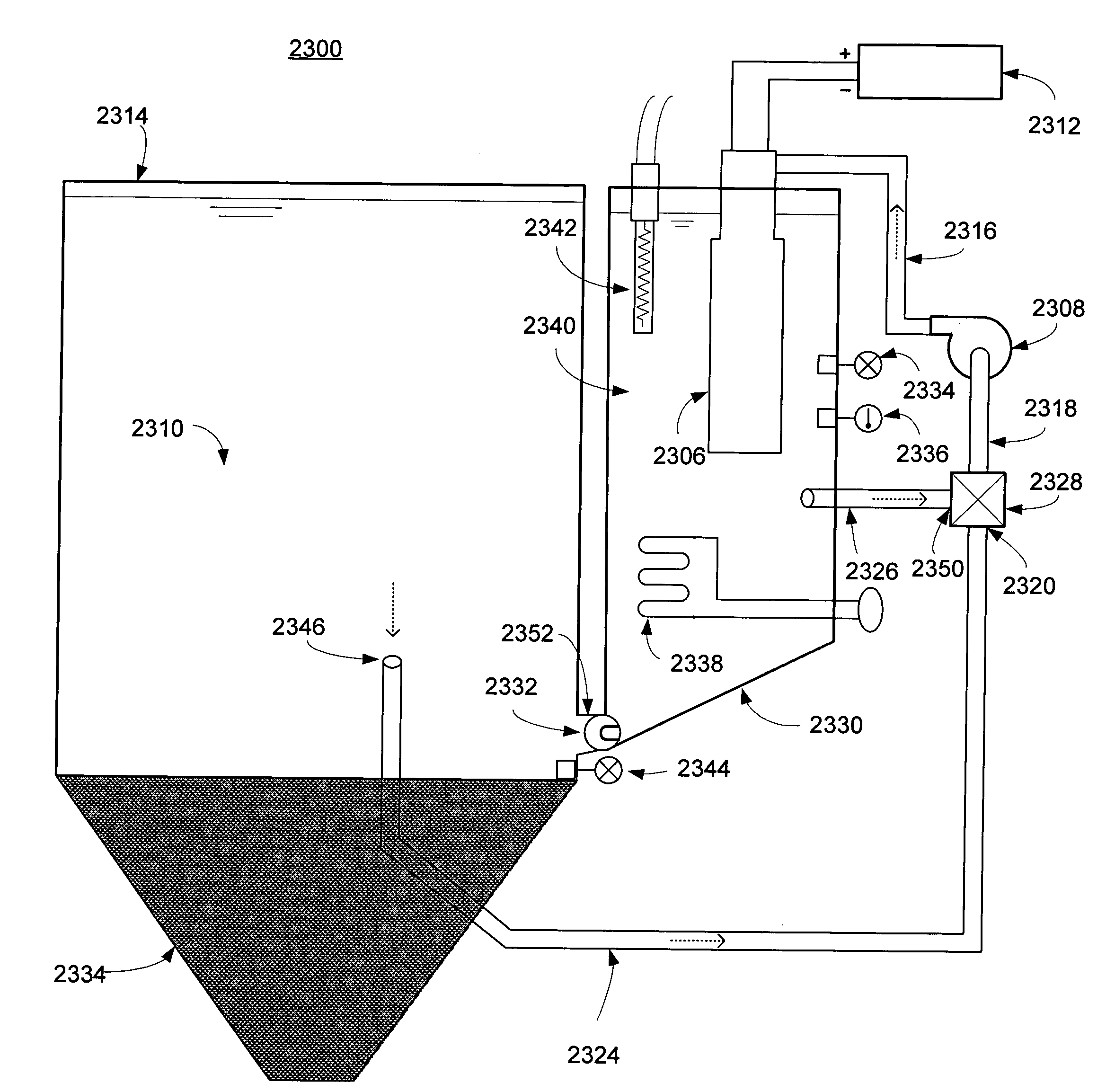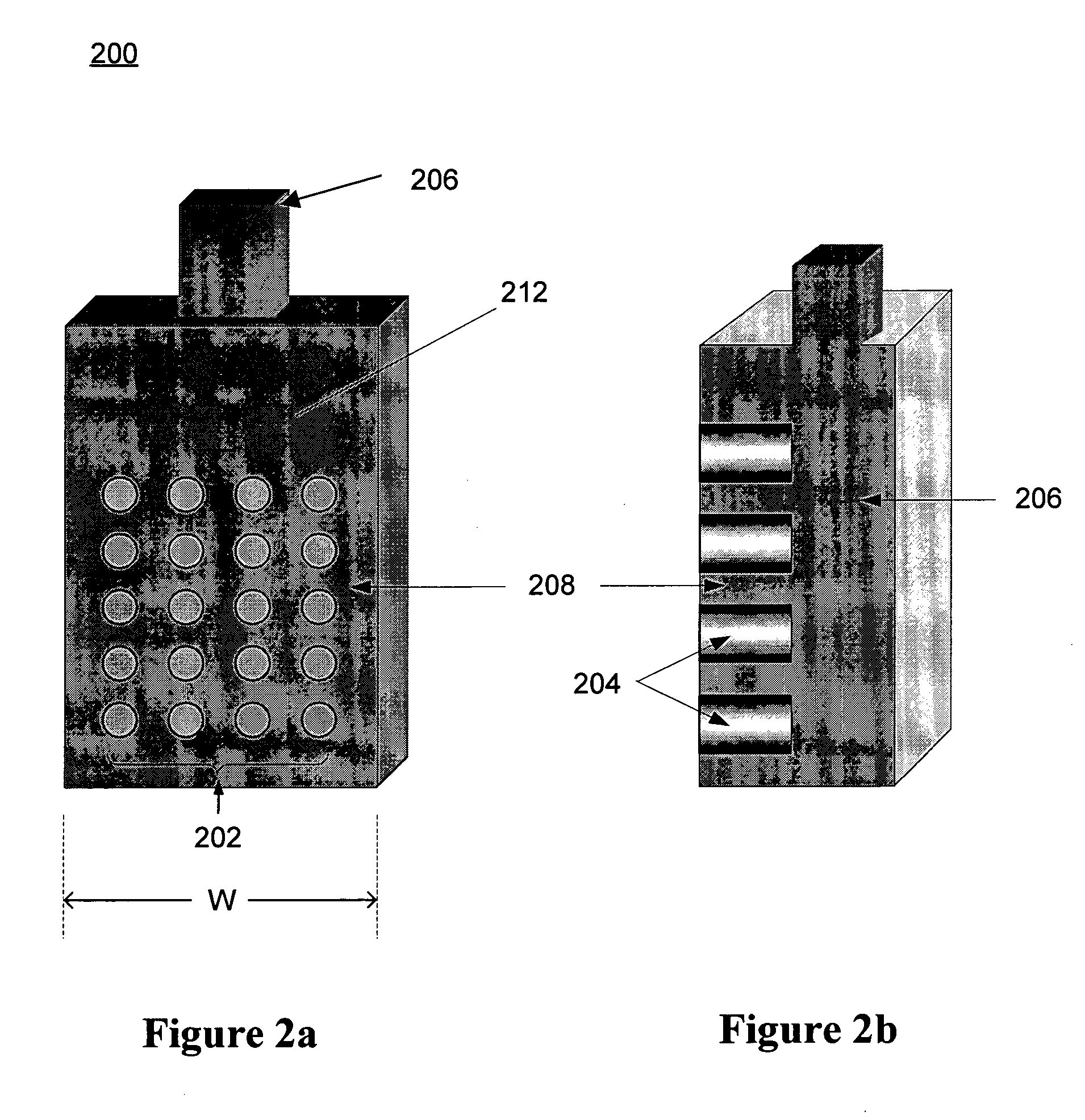Controlled concentration electrolysis system
a concentration control and electrolysis technology, applied in the direction of machining electric circuits, primary cell maintenance/servicing, instruments, etc., can solve the problems of not producing metal in the required particulate form, requiring expensive and cumbersome mechanical processing to put metal in the required form, and the known methods of producing metal through electrolysis are all unsatisfactory for these applications
- Summary
- Abstract
- Description
- Claims
- Application Information
AI Technical Summary
Benefits of technology
Problems solved by technology
Method used
Image
Examples
second embodiment
[0072]a cathode 300 is illustrated in FIGS. 3a. In this embodiment, cathode 300 is generally cylindrical in form, with a plurality of active zones 302 spaced around the outer surface 312 of the cylinder. As illustrated in FIG. 3b, rods 304 extend radially outward from conductor 306, and the ends thereof at the outer surface 312 of the cylinder form the active zones 302. Conductor 306 includes a center terminal 310 that extends axially through the cylinder, and acts as a means for external electrical connection. Insulator 308 fills the interstices between active zones 302 to achieve electrical isolation of the active zones from at each other at surface 312, and also to complete the surface 312.
[0073]FIG. 4 illustrates a second embodiment of system for metal particle production. In system 400, the electrolysis occurs inside a metal pipe 404 that functions as the anode. Metal pipe 404 has a first portion 414 and a second portion 416, and cathode 406 is situated within the second portio...
third embodiment
[0074]a system 500 for metal particle production is illustrated in FIG. 5. In system 500, a double-sided planar cathode 506 is situated between planar anodes 504a and 504b. In a manner similar to system 100 illustrated in FIG. 1, pump 508 circulates solution 510 into container 514 through conduit 518, and out of container 514 through conduit 520. The solution 510 is caused to flow past the surfaces 506a and 506b of cathode 506 by means respectively of flow paths 516a and 516b. Flow paths 516a and 516b in turn are created through the circulation of the solution 510 through the container 514. While solution 510 flows along flow paths 516a and 516b, power supply 512 energizes anodes 504 and cathode 506 to cause formation of metal particles on active zones 502 of the surfaces 506a and 506b of cathode 506. Once formed, the metal particles may be removed as in the previous embodiments. In this embodiment, anodes 504 are electrically connected in parallel.
fourth embodiment
[0075]a system 600 for metal particle production is illustrated in FIG. 6. System 600 comprises a plurality of the systems of FIG. 5 coupled in series. In FIG. 6, four such systems are shown, identified with numerals 624a, 624b, 624c, and 624d, but it should be appreciated that embodiments are possible in which fewer or more than four such systems are provided.
[0076]The series connection is achieved as follows: Coupler 616 connects the positive terminal of power supply 602 to the anode pair in the first system 624a. Coupler 618 connects the cathode in the first system 624a to the anode pair in the second system 624b. Similar couplers respectively connect the cathode in the second system 624b to the anode pair in the third system 624c, and the cathode in the third system to the anode pair in the fourth system 624d. The cathode in the fourth system 624d is then coupled to the negative terminal of power supply 602 through coupler 620. A dielectric material 622 may be placed between the...
PUM
| Property | Measurement | Unit |
|---|---|---|
| surface area | aaaaa | aaaaa |
| diameter | aaaaa | aaaaa |
| temperature | aaaaa | aaaaa |
Abstract
Description
Claims
Application Information
 Login to View More
Login to View More - R&D
- Intellectual Property
- Life Sciences
- Materials
- Tech Scout
- Unparalleled Data Quality
- Higher Quality Content
- 60% Fewer Hallucinations
Browse by: Latest US Patents, China's latest patents, Technical Efficacy Thesaurus, Application Domain, Technology Topic, Popular Technical Reports.
© 2025 PatSnap. All rights reserved.Legal|Privacy policy|Modern Slavery Act Transparency Statement|Sitemap|About US| Contact US: help@patsnap.com



